Hand Stones |

|
The tradition of constructing "hand stones" began early in the Age of Wonder. The term comes from the practice of collecting attractive or unusual rocks and minerals of about the size that could fit in one or two hands. These specimens were placed on a stand, then decorated with figures and other material to create tiny landscapes, thus effecting an ideal synthesis of naturalia and artificialia. A common theme was to have a human or animal observer in the scene. What the observer was observing tended to get more bizarre as the era wore on.
Hand stones are echoed by the viewing stones, or scholar's rocks, of the Era of Oriental Influence. In the viewing stone tradition, there is more emphasis on framing the rock itself, and less on adding to it.
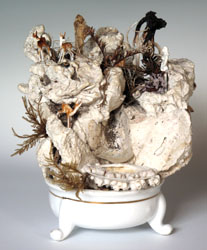 Pastorale |
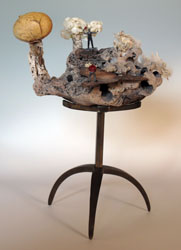 Rise of the Crustaceans |
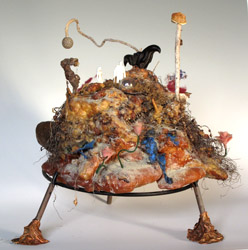 Enchanted Bubble |
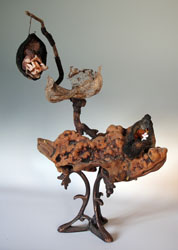 What Is That Thing? |
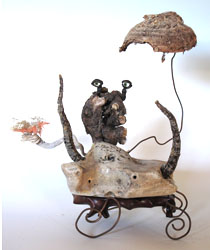 The Eyes Have It |
Pastorale  
A classic example of a hand stone, decked out with an idyllic pastoral scene |
The Rise of the Crustaceans 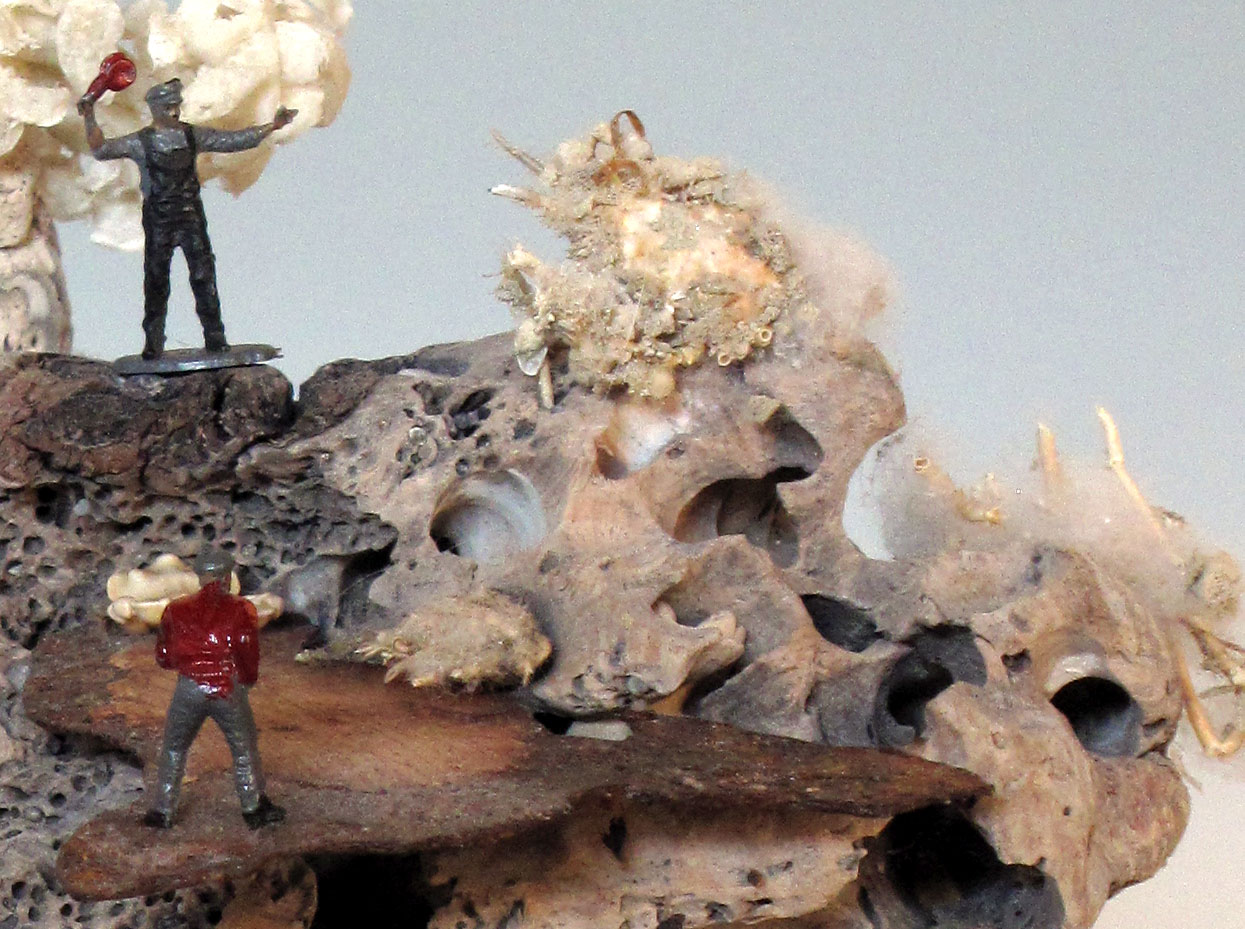
In the coastal areas, people used driftwood instead of stones. Here, there seems to be a sort of dispute between two men and some wayward crustaceans |
The Enchanted Bubble  
Later in the Age of Wonder, it became acceptable to use synthetic materials to create the "stone". In this scene, two people discover a mysterious bubble. |
What Is That Thing? 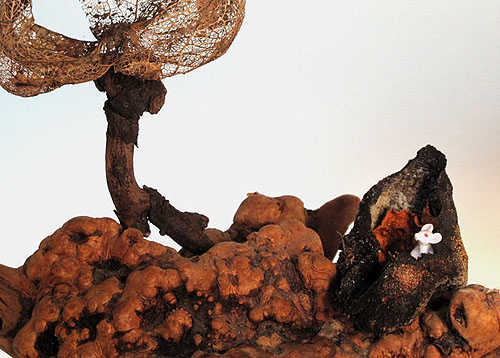
In the waning years of the Age of Wonder, a sort of decadence set in, and the hand stone tradition became looser. This oddity is based on a tree burl. In it, a tiny, big-eared mouse |
The Eyes Have It
This object, built around a sea rock with convenient holes, anticipates the surrealism of the Modern Age. |